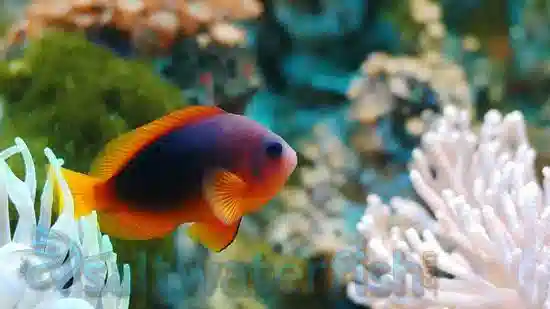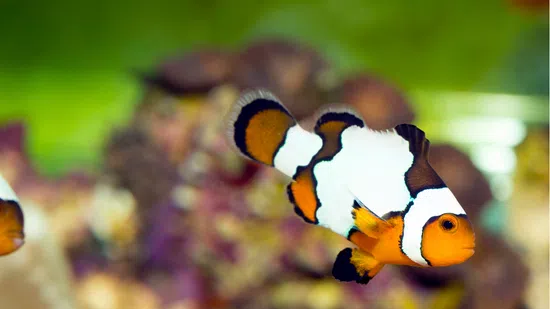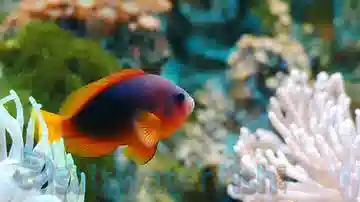Fire Clownfish
Amphiprion ephippium
(0 Reviews)

Fire Clownfish
Amphiprion ephippium
(0 Reviews)
{{ item.name }}
Size: {{ item.extra_field_3 }}
${{ getFormattedPrice(item.saleprice) }} ${{ getFormattedPrice(item.price) }}
To join the waiting list, click here
Free Shipping
With
$199.00
or more in Marine Life.
More details...
Fire Clownfish Care Facts
| Care Level: | Easy |
|---|---|
| Temperament: | Semi-Aggressive |
| Diet: | Omnivore |
| Reef Safe: | Yes |
| Minimum Tank Size: | 30 gallons |
| Max Size: | 4 inches |
Fire Clownfish - Amphiprion ephippium, Care Guide for Saltwater Aquariums
The Fire Clownfish, scientifically known as Amphiprion ephippium, is a captivating marine species that has gained popularity among saltwater aquarium enthusiasts. This guide provides essential information on the habitat, care requirements, and characteristics of the Fire Clownfish, offering a valuable resource for those considering this species for their saltwater aquarium.
Habitat and Origin of the Fire Clownfish
The Fire Clownfish is native to the Indo-Pacific region and commonly found in coral-rich areas and shallow reef flats. Its natural habitat comprises anemones, where it forms a symbiotic relationship, seeking protection among the tentacles. In captivity, the Fire Clownfish thrives in a well-maintained saltwater aquarium, replicating its native environment.
Reef Compatibility of the Fire Clownfish
The Fire Clownfish is considered reef-safe, making it an excellent addition to reef aquariums. Its symbiotic association with anemones adds a natural and visually appealing element to a coral-dominated tank. However, cautious observation is recommended, as individual fish personalities may vary, and some may exhibit territorial behavior.
Size and Lifespan of the Fire Clownfish
Fire Clownfish are relatively small, with an average size ranging from 3 to 4 inches in length. When provided with optimal care in captivity, they can live for up to 10 years or more, making them a long-term commitment for marine enthusiasts.
Diet of the Fire Clownfish in Captivity
Maintaining a balanced and nutritious diet is crucial for the health of Fire Clownfish in captivity. These fish are omnivores and can be fed a diet that includes high-quality flake or pellet food supplemented with frozen or live brine shrimp, mysis shrimp, and marine algae.
Aquaculture and Availability of the Fire Clownfish
Fire Clownfish are less commonly aquacultured than some clownfish species, but their availability to hobbyists has increased recently. When acquiring these fish, it is advisable to seek specimens from reputable sources, such as Saltwaterfish.com, to ensure the health and sustainability of the species.
Compatibility of the Fire Clownfish with Other Fish and Invertebrates:
Compatibility is critical when selecting Fire Clownfish tankmates. Avoid aggressive or territorial species that may threaten the well-being of these Clownfish. Suitable tankmates include peaceful species such as the Royal Gramma (Gramma loreto), Ocellaris Clownfish (Amphiprion ocellaris), and Banggai Cardinalfish (Pterapogon kauderni).
Sexual Dimorphism of the Fire Clownfish
Fire Clownfish exhibit sexual dimorphism, with females generally being more significant than males. Additionally, the dominant fish in a group will often become the female, and if that female dies or is removed, the most prominent male will undergo a sex change and become the new female.
Juvenile to Adult Coloration Changes in the Fire Clownfish
Juvenile Fire Clownfish display vibrant orange coloration with distinct black-edged white bands, which gradually change as they mature. As adults, their coloration evolves to a deep red-orange hue, providing a stunning visual contrast in the aquarium.
Temperament of the Fire Clownfish
Fire Clownfish are known for their relatively peaceful temperament. While they may exhibit territorial behavior, especially near their chosen anemone, they are generally suitable for community aquariums.
Tank Requirements of the Fire Clownfish
- To ensure the well-being of Fire Clownfish, it is essential to provide a well-established aquarium with a minimum size of 20 gallons.
- Adequate hiding spaces, such as live rock or artificial structures, should be incorporated.
- The tank should also feature a host anemone or suitable alternatives for the Clownfish to form a symbiotic relationship.
Water Conditions for the Fire Clownfish
- pH: 8.1 to 8.4
- Salinity: 1.022 to 1.026
- Water Temperature: 75°F to 82°F
- Water Flow: Moderate to high
Other Common Names for the Fire Clownfish
- Aside from Fire Clownfish, this species may be known by other common names, including Flame Clownfish and Red Saddleback Clownfish.
Five Compatible Tank Mates for the Fire Clownfish
- Royal Gramma (Gramma loreto)
- Ocellaris Clownfish (Amphiprion ocellaris)
- Banggai Cardinalfish (Pterapogon kauderni)
- Yellow Watchman Goby (Cryptocentrus cinctus)
- Coral Beauty Angelfish (Centropyge bispinosa)
Why Choose Fire Clownfish from Saltwaterfish.com:
Saltwaterfish.com is a reputable source for acquiring Fire Clownfish due to its commitment to quality and sustainability. With focuses on responsible aquaculture practices, Saltwaterfish.com ensures that the fish offered are healthy, well-acclimated, and sourced from ethical suppliers. By choosing Fire Clownfish from Saltwaterfish.com, hobbyists can contribute to marine life conservation and enjoy the beauty of these captivating creatures in their home aquariums.
In conclusion, the Fire Clownfish is a striking and fascinating addition to saltwater aquariums, bringing vibrant color and natural behaviors to captive environments. By following the guidelines outlined in this comprehensive care guide, enthusiasts can create a thriving and visually appealing marine ecosystem while providing the optimal conditions for the well-being of the Fire Clownfish.
Currently Fire Clownfish does not have any reviews.












